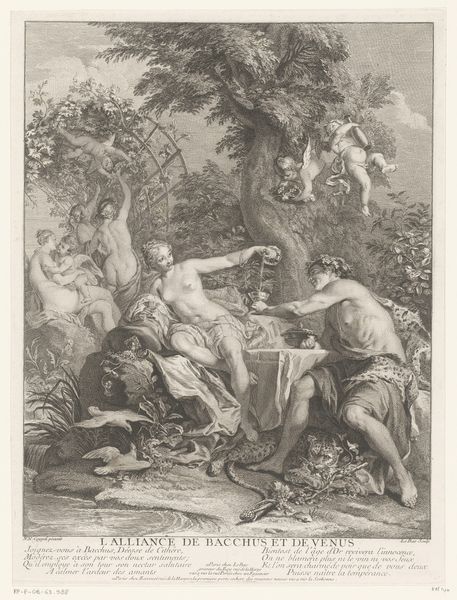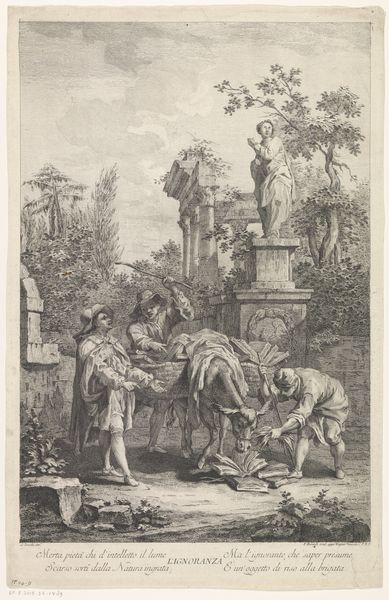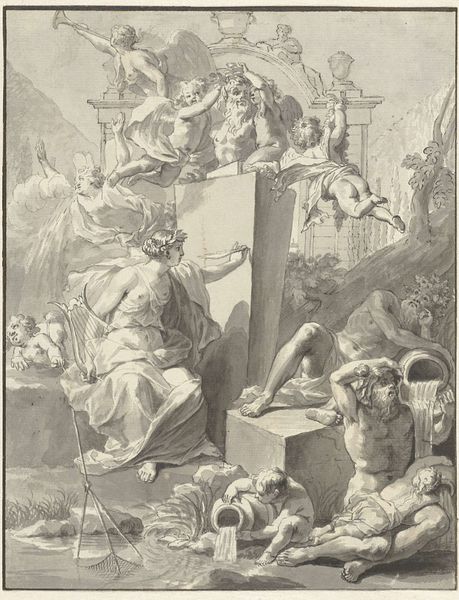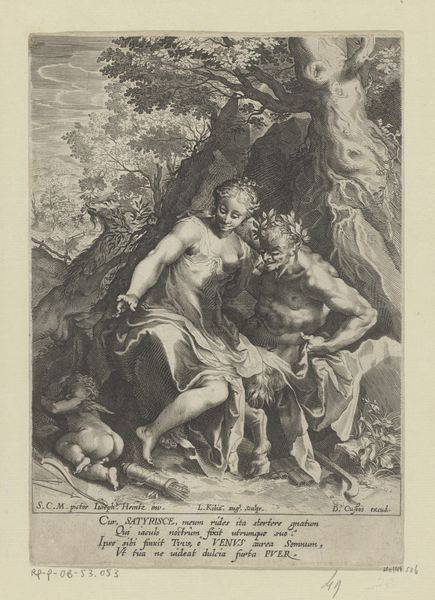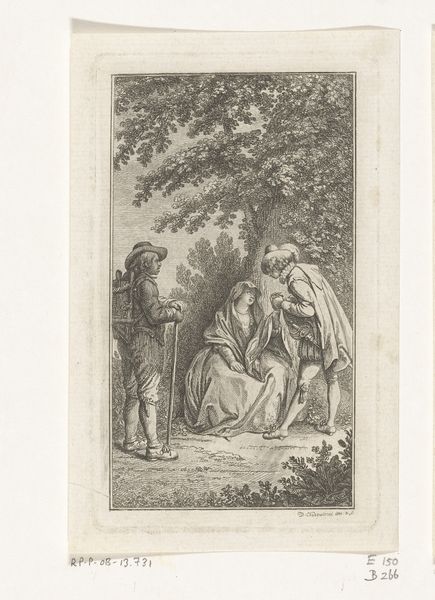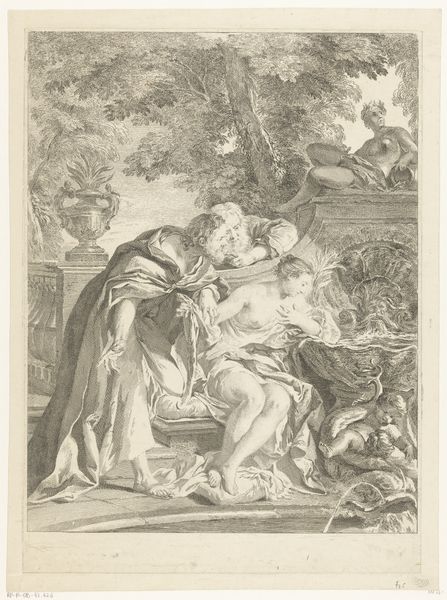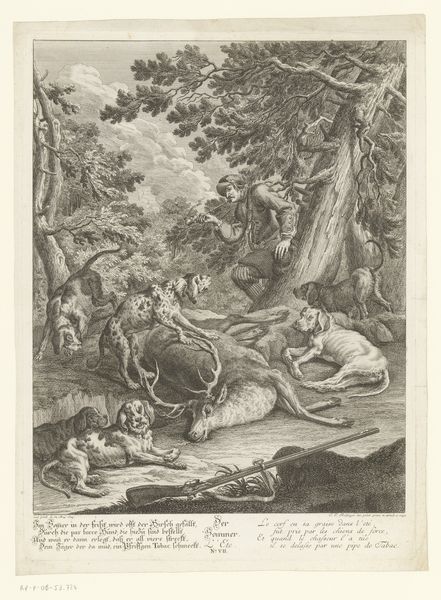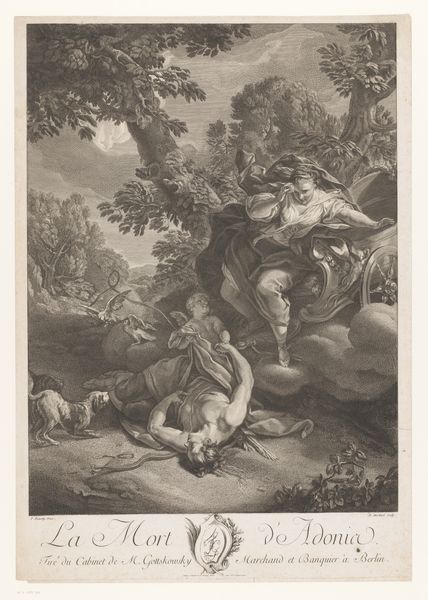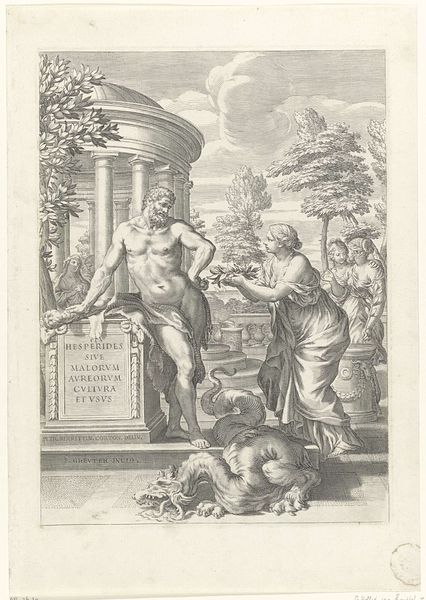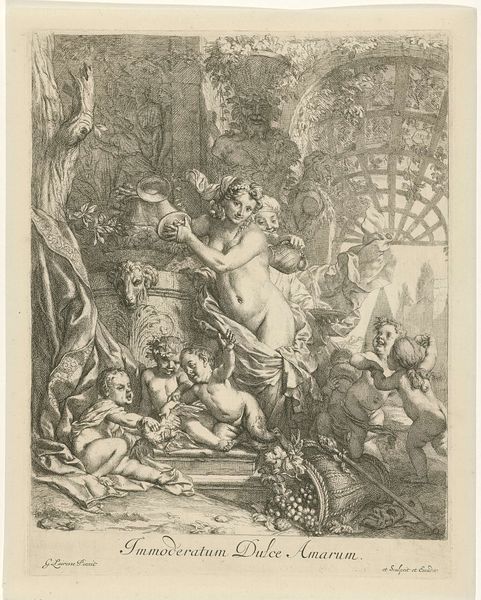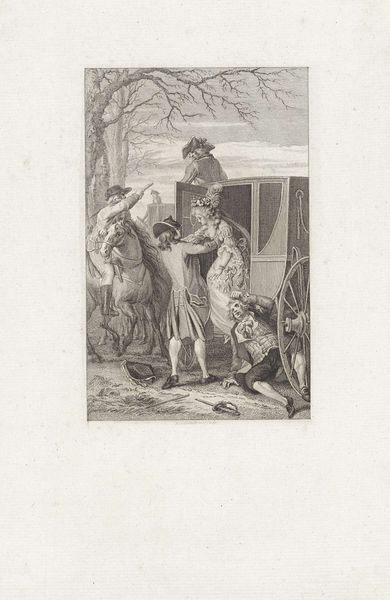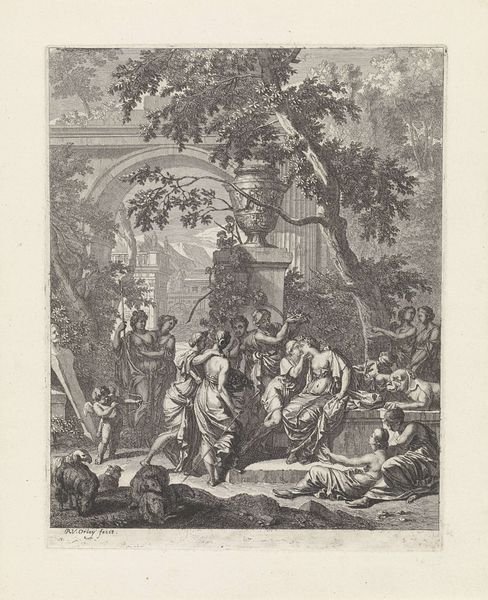
drawing, ink, engraving
#
drawing
#
baroque
#
pen drawing
#
figuration
#
ink
#
line
#
history-painting
#
engraving
Dimensions: height 385 mm, width 299 mm
Copyright: Rijks Museum: Open Domain
Editor: Here we have Gerard de Lairesse’s “Drunken Silenus,” made between 1670 and 1675. It’s an ink drawing, full of incredibly fine lines and detail. I’m immediately struck by the… the rather unflattering depiction of Silenus. What do you see in this piece, beyond the surface-level narrative? Curator: This isn’t just about a drunken old man; it’s about power, gender, and societal norms. De Lairesse, consciously or not, is participating in a long tradition of using mythology to reinforce existing hierarchies. Look at the figures attending to Silenus – their concern isn't necessarily compassionate, but perhaps born out of duty, a patriarchal obligation even. What power dynamics do you observe within the composition? Editor: Well, Silenus is clearly in a position of vulnerability, surrounded by figures who are sober and in control, tending to him. But the women seem more engaged than the standing man, who seems… detached. Curator: Exactly! This perceived "duty," particularly by the women, masks the broader social expectation of female subservience. The image becomes a commentary on the burdens placed on women to maintain order and care for those, often men, who occupy positions of authority, even when debased. Does this change your perspective at all on how we view similar artistic portrayals throughout history? Editor: It definitely does. I hadn't considered how much the piece might be subtly reinforcing unequal power dynamics, even while seemingly just depicting a scene from mythology. Curator: It is this close reading that brings artworks into a dialogue with modern discourses, encouraging reflection on the historical roots of current societal structures. Thinking critically about who is represented, how, and by whom becomes an act of challenging historical power structures. Editor: So, by re-examining these historical artworks through a contemporary lens, we can understand and challenge the inequalities they reflect, and sometimes perpetuate? Curator: Precisely. And that understanding is essential for building a more equitable future. Editor: I'll never look at another mythological scene quite the same way! Thanks for making me think differently.
Comments
No comments
Be the first to comment and join the conversation on the ultimate creative platform.
